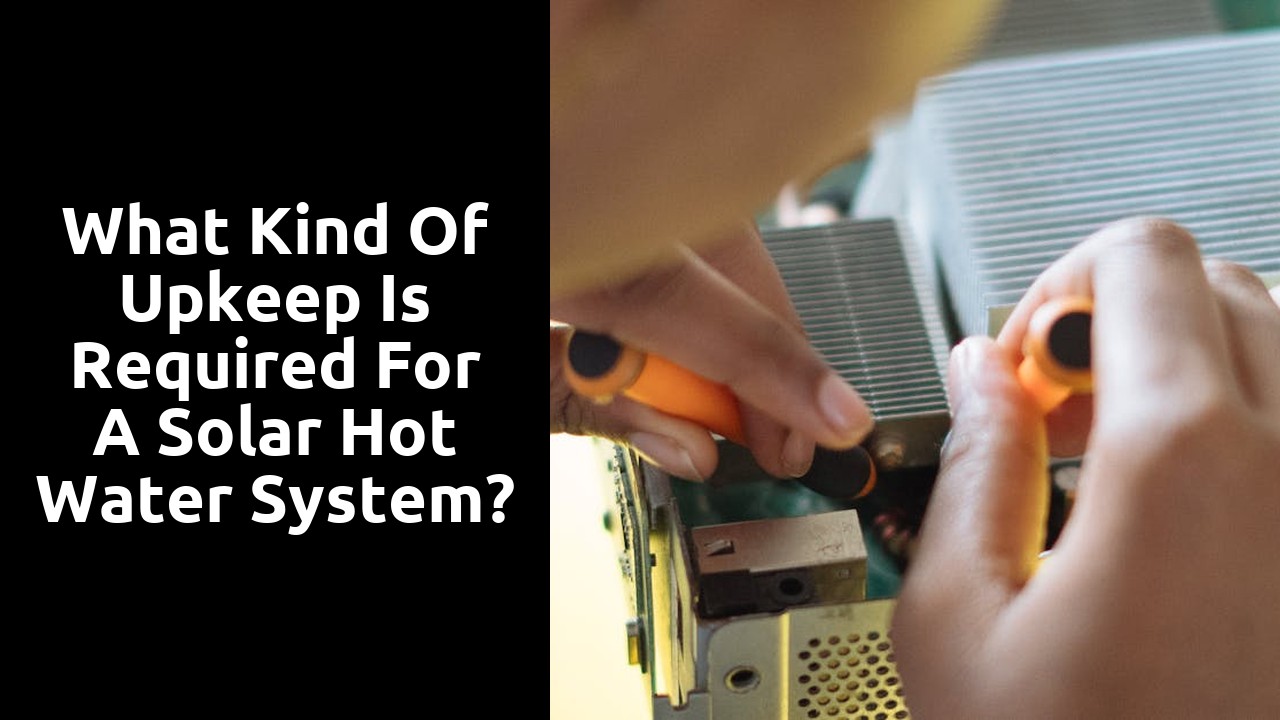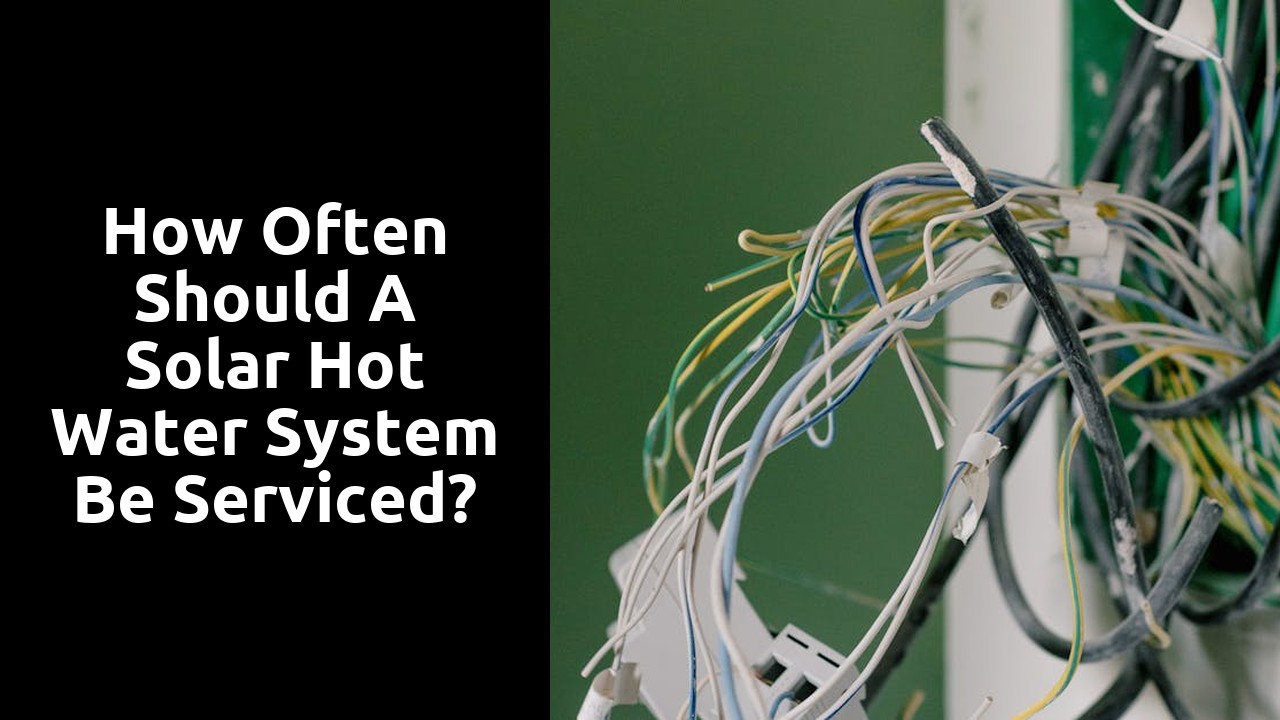
Table Of Contents
Dealing with Corrosion
Corrosion can be a potential issue for solar hot water systems, particularly with metal components exposed to the elements. Regular inspection of the system for any signs of rust or corrosion is essential in preventing damage and ensuring the longevity of the system. Implementing a routine maintenance schedule for corrosion checks can help identify and address any areas of concern promptly. When corrosion is detected, it is important to take immediate action to prevent further deterioration and potential leaks in the system. Solar Hot Water System Maintenance and Repair is a crucial aspect in combating corrosion and safeguarding the efficiency and functionality of the system for years to come.
Applying protective coatings to vulnerable areas can help mitigate the risk of corrosion and prolong the lifespan of the system. Coatings such as corrosion-resistant paints or sealants can provide an extra layer of protection against the corrosive effects of moisture and other environmental factors. It is advisable to consult with a professional to determine the most suitable coating options for the specific components of the solar hot water system. By incorporating protective coatings as part of regular maintenance practices, homeowners can minimise the impact of corrosion and uphold the performance of their solar hot water system. Solar Hot Water System Maintenance and Repair plays a pivotal role in combating corrosion and ensuring the long-term functionality of the system.
Applying Protective Coatings
Applying protective coatings to your solar hot water system is a crucial step in maintaining its efficiency and longevity. By coating the components with a protective layer, you can shield them from potential damage caused by exposure to the elements. These coatings act as a barrier against corrosion, reducing the risk of deterioration and ensuring that your system continues to function optimally. Regularly inspecting the coatings for any signs of wear and tear is essential to uphold the integrity of your system and extend its lifespan. As part of your Solar Hot Water System Maintenance and Repair routine, be proactive in reapplying coatings when necessary to keep your system well-protected against environmental factors.
In addition to safeguarding your system against corrosion, applying protective coatings can also help enhance its energy efficiency. By maintaining a clean and intact protective layer, you can minimise heat loss and ensure that your system operates at maximum capacity. This not only benefits the performance of your solar hot water system but also contributes to reducing your energy bills and environmental impact. Prioritising the application of protective coatings as part of your Solar Hot Water System Maintenance and Repair regimen will go a long way in preserving the functionality and effectiveness of your system for years to come.
Addressing Sediment BuildUp
Sediment build-up in a solar hot water system is a common issue that can impact its efficiency and longevity. Over time, mineral deposits and debris can accumulate in the system, leading to decreased heat transfer and potential damage. Regular maintenance is essential to address this problem and ensure the system operates at its optimal capacity. By proactively managing sediment build-up, you can prolong the life of your solar hot water system and maximise its performance.
To address sediment build-up in your solar hot water system, regular flushing is crucial. Flushing the system involves removing accumulated debris and mineral deposits to maintain its functionality. This simple maintenance task can significantly improve the efficiency of your system and prevent costly repairs down the line. By incorporating regular flushing into your maintenance routine, you can enjoy a reliable and efficient Solar Hot Water System Maintenance and Repair operation for years to come.
Flushing the System
Flushing the system is a crucial maintenance task for ensuring the efficiency and longevity of a solar hot water system. Over time, mineral deposits and sediment can accumulate in the system, hindering its performance. Regularly flushing the system helps to remove these deposits and maintain optimal functioning. To flush the system, turn off the power supply and water inlet, then connect a hose to the system's drain valve to release the water along with any sediment. It's recommended to repeat this process a few times to ensure thorough cleaning. Flushing the system should be done as part of routine maintenance for all solar hot water systems to prevent issues and uphold their functionality.
Solar Hot Water System Maintenance and Repair involves various tasks, with flushing the system being a key component. By neglecting this essential step, the system may experience reduced efficiency and potential damage due to sediment build-up. A regular flushing schedule, as recommended by the manufacturer, can help avoid these issues and keep the system running smoothly. It's advisable to consult with a professional if unsure about the flushing procedure or if encountering any difficulties during the maintenance process. Regular maintenance, including flushing the system, is vital for the overall health and performance of a solar hot water system.
Handling Extreme Weather
Handling Extreme Weather
When it comes to the maintenance and repair of your solar hot water system, it is crucial to consider its resilience in the face of extreme weather conditions. Australian summers can bring scorching temperatures, putting stress on the components of your system. To protect your system from overheating during heatwaves, ensuring proper insulation and shading is essential. Adequate ventilation is also key to prevent any damage caused by excessive heat build-up.
Moreover, Australia is prone to severe storms and cyclones, which can pose a significant threat to your solar hot water system. To safeguard your system during these turbulent weather events, it is advisable to secure any loose components and inspect the system for any signs of wear or damage. Regular maintenance checks before and after extreme weather situations can help detect any issues early on, ensuring the longevity and efficiency of your solar hot water system.
Protecting the System in Storms
Protecting the Solar Hot Water System in Storms is crucial to ensure its longevity and efficiency. As storms can bring about high winds and heavy rainfall, the system may be susceptible to damage if not properly secured. One key aspect to consider is the installation of strong and durable mounting systems to keep the solar panels in place during turbulent weather conditions. It is essential to regularly inspect these mounts to confirm they are secure and make any necessary adjustments promptly to prevent potential damage.
Along with securing the physical components of the system, it is also important to protect the internal components from water damage in the event of severe storms. Checking for any signs of leaks or water infiltration in and around the system can help to identify potential issues early on. Additionally, having a professional install weatherproof enclosures for sensitive components can provide an extra layer of protection against water intrusion. By taking proactive measures to safeguard the Solar Hot Water System in Storms, homeowners can minimise the risk of damage and ensure the system continues to operate efficiently.
FAQS
How can I prevent corrosion in my solar hot water system?
To prevent corrosion, it is important to regularly inspect the system for any signs of rust or deterioration. Applying protective coatings can also help extend the life of your solar hot water system.
What should I do if there is sediment build-up in my solar hot water system?
If you notice sediment build-up in your system, it is recommended to flush the system to remove any debris or build-up that could affect its performance.
How should I protect my solar hot water system during extreme weather conditions?
To protect your solar hot water system during extreme weather conditions, such as storms, it is important to take precautionary measures like securing the system and checking for any damage afterwards.
How often should I flush my solar hot water system to maintain its efficiency?
It is advisable to flush your solar hot water system at least once a year to remove any sediment or build-up that may be affecting its efficiency.
Can I apply protective coatings myself to my solar hot water system?
While applying protective coatings to your solar hot water system can help prevent corrosion, it is recommended to consult a professional to ensure proper application and effectiveness.
